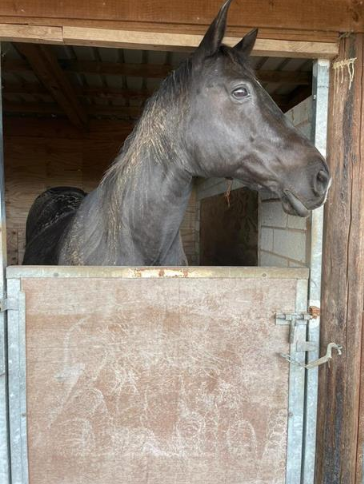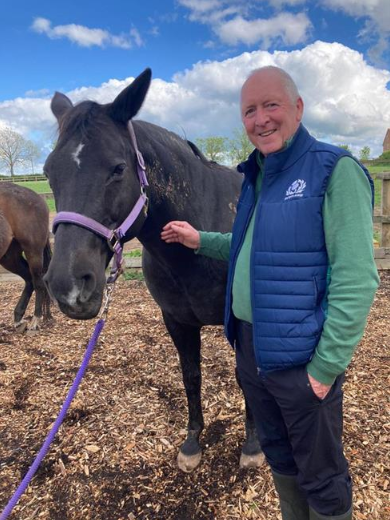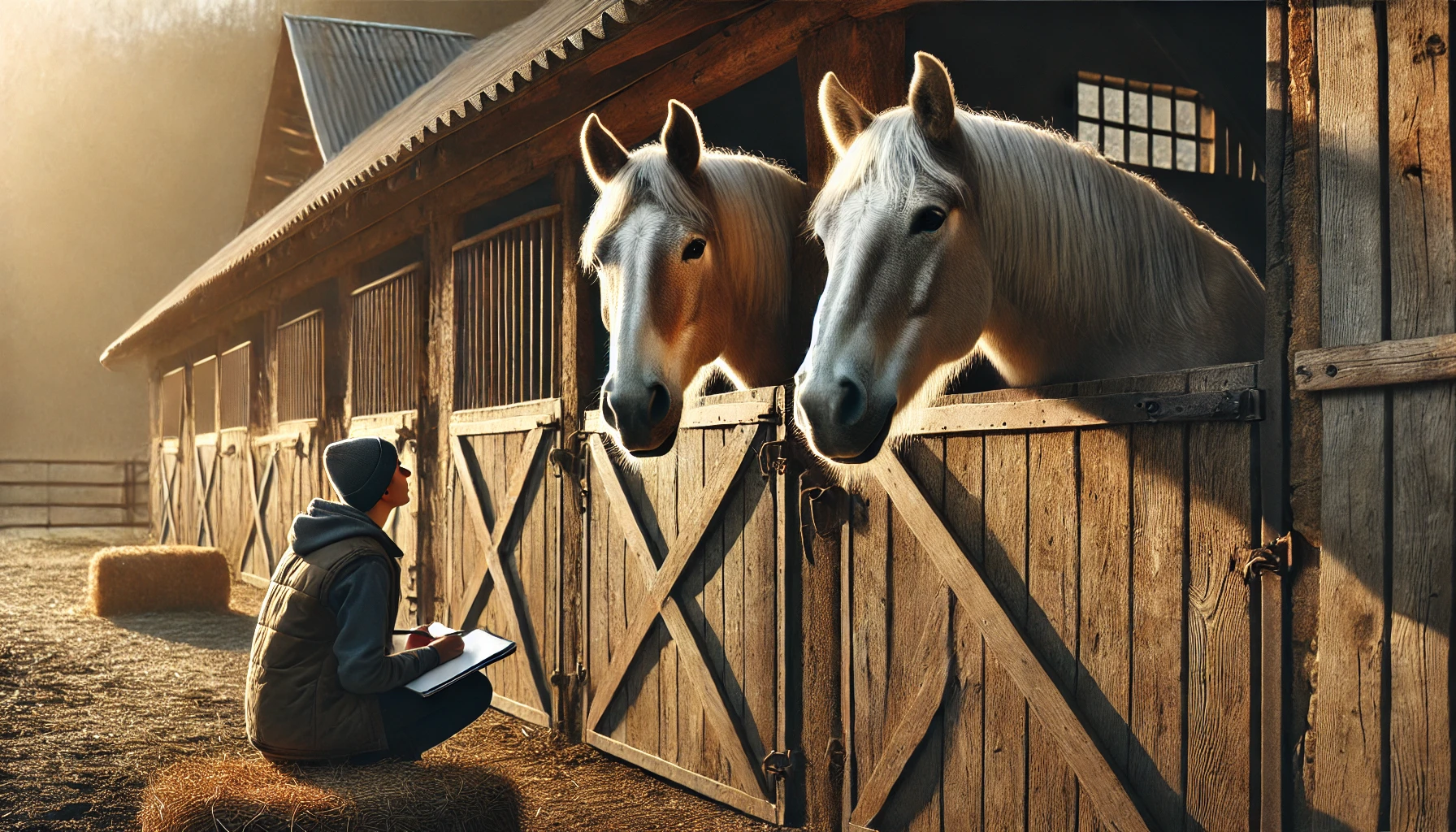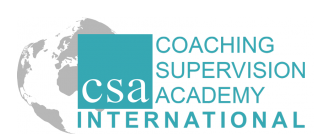Lessons from the Stable Yard
by CSA Accredited Supervisor and Faculty Member Doug Montgomery
I had the privilege of spending a day with Jude Jennison and her stable of horses last year. Two things stuck with me that I want to share with you: the power of immediate feedback and the power of being present in the here and now.
Horses, Jude explained, live in the present moment and operate through non-verbal communication. This combination means that they pick up on what I am communicating even when I don't know what I'm communicating! I soon had the
chance to witness this in practice, during my first encounter with Kalle, the imposing lead mare of the herd.
Kalle is a tall, beautiful creature. Our first exercise was to approach her and make contact. I was to let her smell my hand, and then, once she acknowledged me, to put a hand on her shoulder and a hand on her chest and feel her breathing. I aim was to allow my breathing to synchronise with hers. Simple enough, I thought!

From the moment I’d set eyes on Kalle, I was fascinated by her power, her elegance, her presence. Rarely have I been in such close proximity to such a powerful animal. I had been drawn to watching her from the moment we walked out to the row of horse
stalls; and a good while before I was called upon to try the exercise.
As I approached her, I kept eye contact. I wanted her to acknowledge me; I was excited about being in connection with her. I was really curious about what it would be like to establish a relationship with this
amazing animal, how exhilarating it would be.
She had other ideas!
She ignored my outstretched hand. She turned her head away. She snorted loudly. I approached a step closer. She gently but firmly turned her head away and moved so that I was gently moved out of the way.
I withdrew, disappointed, a little hurt, and confused by my rejection. What had I done wrong?
When debriefing with Jude afterwards, I realised that I was very intensely interested in Kalle. I was focused on what I wanted from her - from the connection I wanted and my curiosity about what that would be like.
As a result, my eye contact with her had been intense and unbroken. My intensity and desire to make contact did not take
into consideration what Kalle needed or wanted. My intensity was uncomfortable to her and may have appeared as a threat - so she gave me the feedback that, in that state, I was not welcome. She did not want anything to do with me if the
interaction was to take place on this level.
I know this because later in the day she willingly partnered with me in another exercise in which I led her around the paddock. This time, I found a way to be present at a much lower level of intensity and with a higher level of interest in how she was.
She did not bear a grudge towards me and was prepared to accept me as I was at that moment, rather than reject me again
because of how I had acted at the first encounter.

The lessons Kalle taught me are manifold, and I can relate to them as a supervisor, as a leader, and as a coach:
- Be aware of my intensity. Is my curiosity too intense? What might my level of intensity and curiosity be like for my coaching clients and supervisees?
- What is my purpose? Am I in partnership or am I focused on what I need and what I want — or am I too focused on what the other person needs or what they want? Partnership requires a healthy balance of give and take. As coaches, we can be so much in service of our clients that we forget to ask for what we need from them and lose sight of our own boundaries.
- Instant feedback is usually valuable. It allows the recipient to reflect on what they are doing. Neither good nor bad, positive nor negative—simple data to reflect on what they are doing, whether it’s working or not working. Incorporating fact based, in the moment feedback helps build trust and relationship, and enhances the potential for great work.
- Overall, the day taught me that groups, teams, and individuals need three things: Safety, Trust (both ways), and Clarity (of the direction of intentions and responsibilities) to succeed and operate smoothly.
This is just one example of the things we learned from a day spent at Jude Jennison’s stable. Find out more about Jude at www.judejennison.com
Doug Montgomery

If you are interested in the experience of working with Jude and her horses, CSA is holding another day at the stables:
March 31st 2025 - full details can be found here
Book quickly because places are strictly limited!
